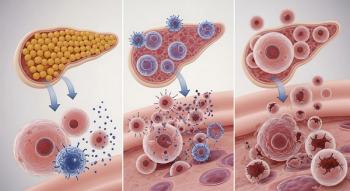
The new patient-centered pharmacy
Patient-centered pharmacies, which put consumers and their relationship with pharmacists and caregivers at the center of the business model, is producing improved outcomes.
Accountable care organizations and medical homes have set the pace for an emerging trend toward patient-centered pharmacies-a not-yet clearly defined model but one that could connect all the pieces of the healthcare puzzle.
Patient-centered pharmacies put consumers and their relationship with pharmacists and caregivers at the center of the business model, says Mike Cantrell, vice president of pharmacy network development for
“Patients are fully engaged when they are making the most of the healthcare services that are available to them,” says Cantrell. “Pharmacies can influence a patient’s willingness to engage by helping to improve health literacy and providing education regarding medications and health conditions and how they are related.”
A patient-centered pharmacy also contributes to patients receiving coordinated, timely and proactive care by leveraging the frequency with which they visit pharmacies to pick up prescription medications, adds Jonathan Niloff, MD, chief medical officer for
Niloff points out that those with chronic conditions are apt to fill prescriptions monthly, giving pharmacists an opportunity to expand their role in patient care.
Related:
Cantrell sees patient-centered pharmacies transitioning from the traditional transaction-based focus on filling prescriptions to a holistic approach that ensures optimal delivery of patient-focused care.
He says the new model also emphasizes pharmacist collaboration and communication with other care team members on behalf of a patient to ensure safe, effective, and coordinated care. “The process is enhanced through the use of information technology systems that create bidirectional data flow and facilitate communication.”
An expanded role for pharmacists, Niloff says-outside of medication management and driving adherence-might include reminding patients to get preventive care screenings and required interventions for specific chronic conditions, such as HbA1c tests for diabetes; counseling; administering immunizations; and collecting clinical data-weight, blood pressure-to share with a patient’s primary clinician.
Walgreens’ focus
Although it has not officially adopted a patient-centered pharmacy model,
“This all starts with providing greater access to high-quality, affordable care, offering a broader range of healthcare services and providing more personalized care to our patients,” he says. “The pharmacist/patient relationship is critical, and we put the patient first in everything we do.”
Cohn points out, however, that Walgreens already offered immunizations, medication therapy management, patient counseling, blood pressure testing and collaboration between pharmacists and other providers.
In many of the stores, pharmacists sit in front of the counter to spend more time talking with and consulting patients. Walgreens has extended the service to mobile and online applications called
Many other services offered by Walgreens take advantage of the online and mobile tools and resources available today and enable its pharmacists to extend their reach to consumers.
Its
Its 24/7 access to MDLIVE’s network of U.S. board-certified doctors for virtual consults, which started as a mobile application in California and Michigan in December 2014, recently expanded to Colorado, Illinois and Washington and is now available through Walgreens’ website on desktop and tablet devices. On June 10, Walgreens announced that it will expand round-the-clock access to customers in 25 states by the end of the year.
Last year Walgreens developed its
In addition, Walgreens partnered with WebMD last year to launch
Taking it one step further, Walgreens pharmacists can proactively reach out and ask participants if they need assistance or advice to help them reach their goals.
Related:
Cohn says many of these services have indicated improvement in patient health, adherence, and outcomes and “in the end, these all help to strengthen that relationship (between pharmacists and customers) and drive strong customer loyalty.”
Advantages/challenges
The advantages of a patient-centered pharmacy are manifold, according to Cantrell:
- Better customer health, improved quality of life and greater satisfaction;
- More efficient pharmacies leading to greater profitability;
- Better use of pharmacists’ skills and expertise;
- Collaboration between physician and pharmacist to improve performance of both;
- Benefits for health plans by assisting them in achieving better performance against quality metrics, such as Star Ratings and HEDIS scores.
Niloff believes that patients with chronic conditions stand to benefit most from the new pharmacy model, through increased compliance with clinical guidelines; more intense, regular monitoring based on the frequency of visits to a pharmacy; and the convenience of being able to “drop in” for a quick blood pressure check in their neighborhoods without an appointment.
On the other hand, he outlines three key challenges:
- Finding pharmacists with requisite training and a clinical comfort level to perform the services that are beyond the traditional pharmacist’s role.
- Creating patient-specific interventions generated in a software system that is part of a health system or plan, along with shared IT that delivers patient-specific recommendations to a pharmacist at the point of dispensing for care coordination.
- Developing an economic model that makes it worthwhile for a pharmacist to engage in expanded activities.
“Such better care and easier access should decrease total costs of care and reduce the number of physician office and emergency room visits and hospitalizations,” Niloff says.
Cantrell emphasizes scalability, cost, provider execution and payer/provider alignment of incentives as key challenges.
Integrating technology
As mobile and other technologies become standards in healthcare, they are capable of being at the forefront of a patient-centered pharmacy. These technologies are aggregating data and sharing them among care teams, providing actionable information to patients, creating accountability, providing education and safeguarding patients’ protected health information, Cantrell says.
But, Cantrell adds, “While it is difficult to overstate the future role of mHealth in healthcare delivery with respect to pharmacy, mHealth is not the primary driver of transition to a patient-centered model. The bigger driver is the emphasis on quality improvement, cost control/reduction, access to providers and related market pressures.”
To enable pharmacies to engage patients, Ateb deploys its Patient Management Access Portal, a single portal for managing all patient interventions that tracks and schedules progress and patient activities and measures and manages performance in achieving objectives.
Services include education on medication use and successfully managing specific chronic diseases, identification and resolution of medication-related problems and improvement of medication adherence.
One of the features Cantrell emphasizes is an appointment-based model of pharmacy practice. Supported by the
Related:
“This efficiency,” he says, “affords the pharmacy time to deliver additional, highly valuable pharmacy services for which bandwidth otherwise does not exist. The longitudinal nature of the model is the ultimate facilitator of patient engagement and empowerment.”
Evolution or revolution?
Cantrell admits that, while the current prevalence of a patient-centered pharmacy is modest, its tremendous positive clinical and economic impact is driving a steep upward trend.
He anticipates more pharmacies will move in this direction following government and payer projections that 75% of their payments will be value-based by 2020. When that happens, notes Cantell, “Payment will be contingent on pharmacies’ abilities to produce a given result or outcome, not on the processes, actions and services they must provide to get there.”
Mari Edlin is a writer in Sonoma, California.
Newsletter
Get the latest industry news, event updates, and more from Managed healthcare Executive.




















































